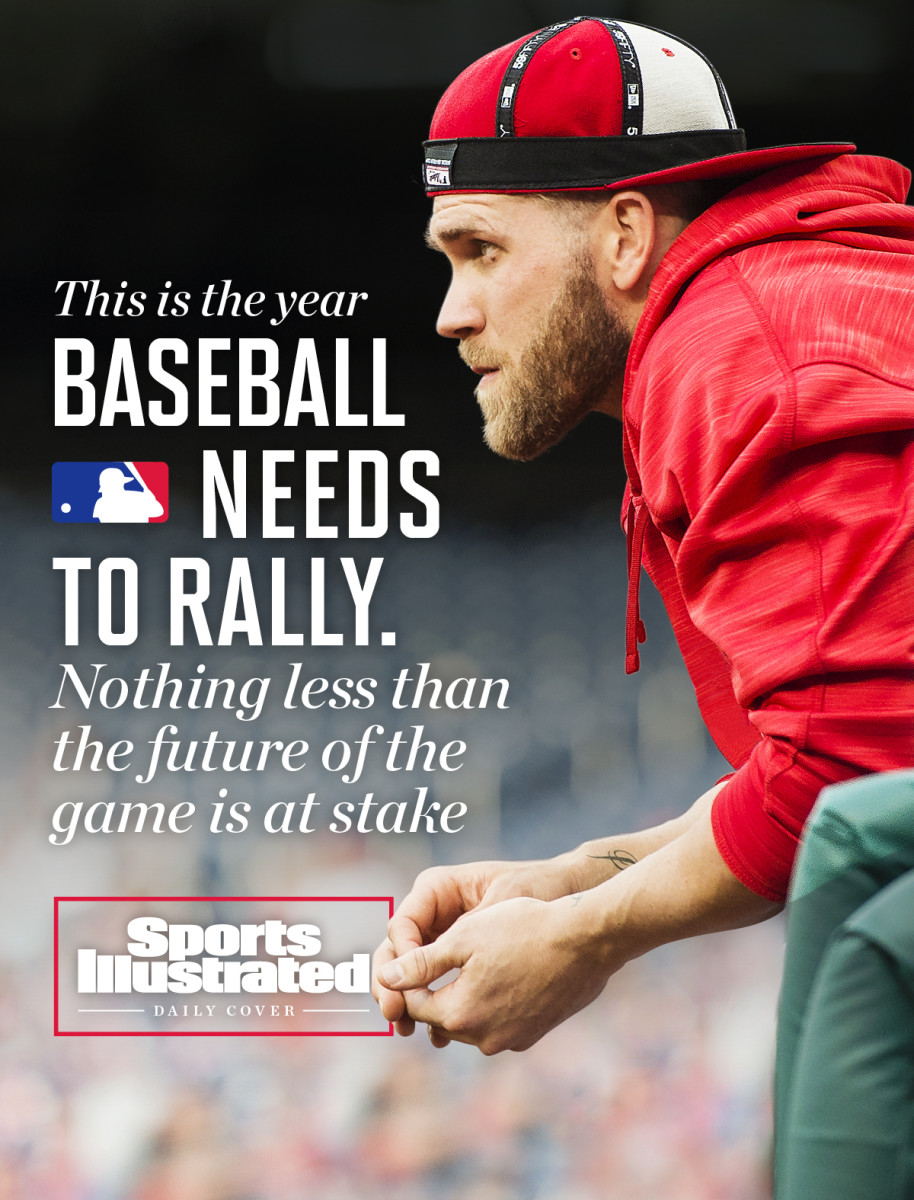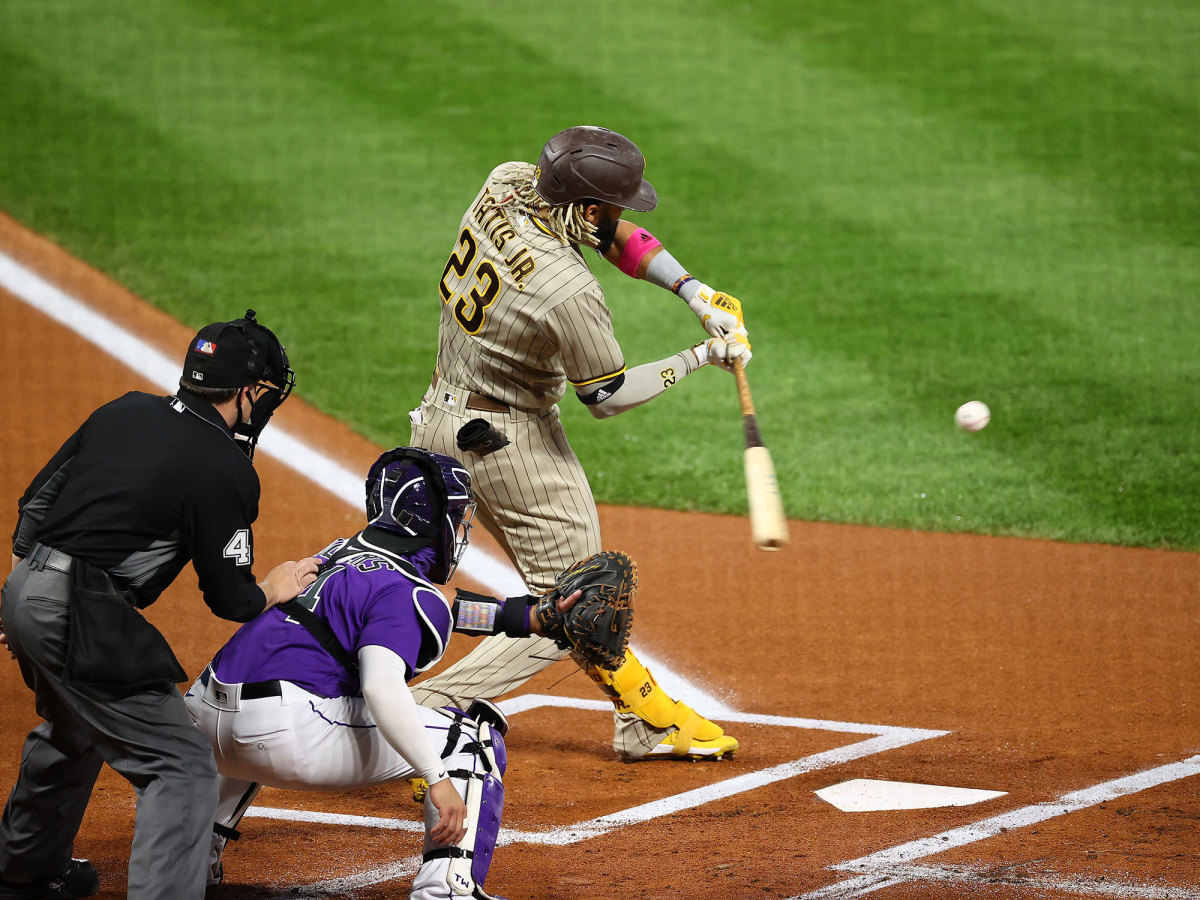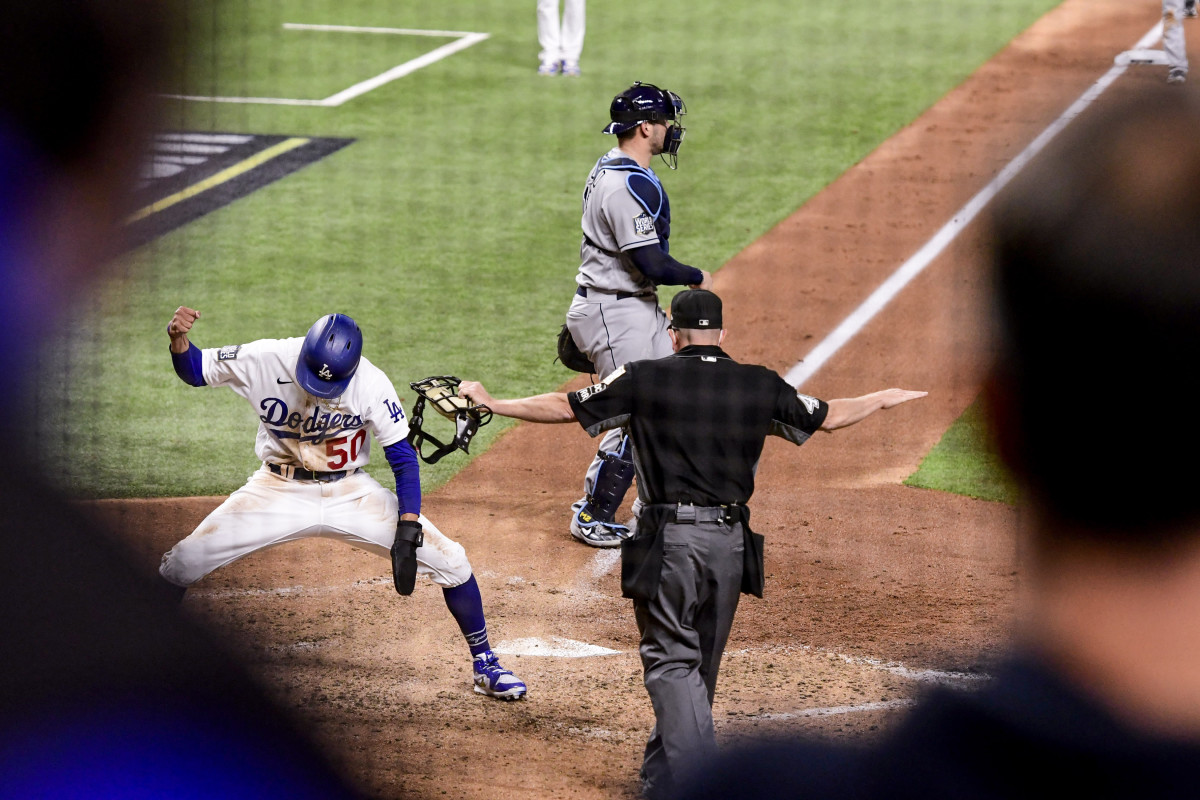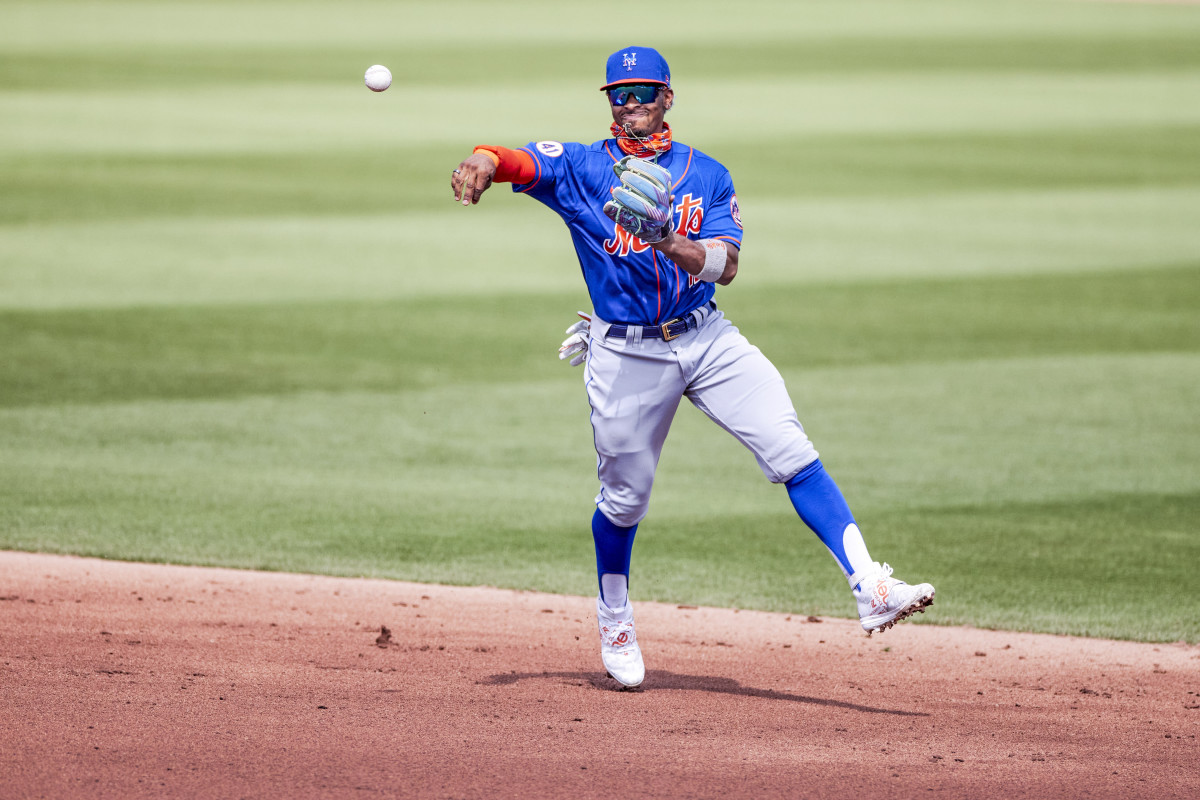Baseball Needs to Rally in 2021. The Future of the Game Is at Stake
The home run is a bolt of lightning. Over before you know it.
The strikeout is a vacuum. The absence of something.
The rally is what we love most. We wear our hats askew, seek divine intervention and create noise as if it is the very fuel to the rally.
Nothing is more beautiful, more uplifting, in baseball than the rally. It is the orchestral work of our game. Strings, woodwinds, brass and percussion coming together. One from many. It is the epitome of teamwork.
This is the year baseball needs to rally. It is the comeback year of 162 games, of turnstiles that turn, of roars of the crowd that are real and, in the natural order of things, of springtime with baseball.

Every Opening Day is restorative. After a long winter, it arrives on our soul like warm sunshine on our skin. But this one is special.
It begins the most important baseball season since 1994, when owners and players beat their labor war drums and actually made good on their threats, shutting down the game during what was an all-time high in attendance. The menace of those drumbeats is back—the collective bargaining agreement expires Dec. 1—only now it is accompanied by the lugubrious dirge of the two trends that are sapping the game’s popularity: too much dead time and too few balls in play.
Nothing less than the future of the game is at stake. A rally means owners and players look beyond a transactional view of labor relations and strike a deal that actually modernizes the sport. A rally means people are eager to return to the ballpark as restrictions of pandemic life lift. A rally means people discover this is the deepest collection of young sluggers the game has ever seen, especially at shortstop.

Without such a rally, baseball is in severe trouble. In just the past 10 years, players with their dawdling between pitches have added 13 minutes, 17 seconds of pure dead time to the average game. In that decade, pitches per game without the ball in play increased from 239 to 259. In a connected world where our attention online shifts every 19 seconds, baseball is selling a product with 24.9 seconds between pitches.
The math just doesn’t work—nor will it if owners and players risk another work stoppage. In 1994, they were emboldened enough by attendance to believe fans would come streaming back. (Contrary to popular belief, they did not. Attendance dropped 20% in 1995. It took 12 years and another expansion to get attendance back to pre-strike levels.)
Baseball holds a much more precarious place in the entertainment landscape in 2021 than it did in 1994. Attendance dropped four straight years before the pandemic season. It declined 14% from its all-time high in 2007. Now folks are out of the habit of going to the ballpark. Will they be eager to return to a strikeout-heavy game that keeps getting slower? Have the habits of streaming and video gaming, which virtually did not exist in 1994, become more ingrained than gathering as groups? If it took 12 years to come back from the 1994–95 players’ strike, how long would recovery take in much more dire times?
The threat of what might be on the other side of a labor war is the greatest motivation toward an agreement. But then … owners and players have agreed on nothing significant to curb the pace of action problem for a decade, they could not agree on how to play the 2020 season (commissioner Rob Manfred determined it would be 60 games), and this year they could not agree on an expanded postseason or the DH in the National League. Distrust is deep.
In baseball’s favor, the right pieces are in place for a rally. Here are the most interesting story lines to begin the comeback.

1. Young sluggers
The two biggest offensive trends of the past decade are an emphasis of slug over batting average (hence, “slug is in the air”) and, because of advanced training and competition, the shortening of the learning curve to be major league ready. Combine them and you get a bevy of young impact hitters.
The change in trusting prodigies began with Mike Trout and Bryce Harper in 2012. It continued with Cody Bellinger, Rafael Devers, Juan Soto, Ronald Acuña Jr. and Fernando Tatis Jr. Now here come Bo Bichette, Dylan Carlson, Jazz Chisholm Jr., Wander Franco, Vladimir Guerrero Jr. and Luis Robert.
We never saw anything like the past decade when it came to young sluggers. Just look at the number of 20-home run seasons for players who were 23 or younger:
Decade | 20-HR Seasons |
|---|---|
2010s | 75 |
2000s | 46 |
1990s | 33 |
1980s | 36 |
1970s | 42 |
1960s | 46 |
1950s | 29 |
2. The Trout Drought
Mike Trout turns 30 years old this summer. He still has not won a playoff series. Since expanded playoffs began in 1969, only Rod Carew totaled more WAR than Trout without a playoff series win—and Trout will exceed Carew’s post-1969 WAR this year.
This looks like one of Trout’s better Angels teams to break the drought, especially if Shohei Ohtani, who lit up the Cactus League, makes 20 starts and gets 400 at bats.
Let’s not forget, too, that Bryce Harper also has never won a postseason series. His Phillies will need a dramatic improvement in relief pitching and defense just to contend with the Braves, Mets, Nationals and underrated Marlins in the NL East.
3. The Title Droughts
Five of the past six World Series winners ended droughts of 30 years or more.
Who’s got next? The best chances to do so, in order, are San Diego, the Mets, Oakland, Minnesota, Milwaukee and Cleveland.
For the Yankees, the drought has been “only” 11 seasons, but the 2010's were the first decade the franchise missed the World Series since it won its first in 1923. In their eight elimination losses, Yankees starters averaged only 3 1/3 innings, which is why the playoff-ready health of pitchers Corey Kluber, Jameson Taillon and Luis Severino is key. But more tellingly, the Yankees have been stopped because their slugging offense has not come through against better pitching with seasons on the line. They have scored 12 runs in eight elimination losses, including one run against Tampa Bay last year.

4. The Repeat Drought
The Dodgers will try to become the first team to win back-to-back world championships since the 1998–2000 Yankees, a record drought in the World Series era. Los Angeles could be even better this year, with the additions of pitchers David Price, who opted out of last season, and Trevor Bauer, a free agent addition whose spin rate jumped noticeably last season. All pitchers’ spin rates will be monitored closely this year as MLB cracks down on the use of substances that began as grip aids and morphed into performance aids.
5. The Winter League Champions
The Padres (Yu Darvish, Blake Snell, Joe Musgrove), Mets (Francisco Lindor, James McCann, Carlos Carrasco), White Sox (Lance Lynn, Liam Hendricks) and Cardinals (Nolan Arenado) all won the winter.
Lindor will have the biggest impact because his superior defense will be noticeable on a team that has played such poor defense.
San Diego is built playoff-tough with four starting pitchers who struck out more than 10 batters per nine innings last season.
The White Sox are a fascinating experiment with a young, ready-to-win team in the hands of 76-year-old Tony La Russa, who hasn’t managed in a decade. La Russa managed Minnie Minoso, who was born in 1925, and now he manages Garrett Crochet, who was born in 1999.

The world is full of mystery, and in the past year, too much pain. But as Albert Einstein once said, “From the standpoint of daily life, there is one thing we do know: that we are here for the sake of others.”
By going back to the ballpark this year, we reconnect with one another—family, friends and fellow congregants in the church of baseball. To be human is to know the power of the shared experience.
And after all, isn’t that the best part of baseball? The human connection. The high five. The hug. The shared joy. Even the shared disappointment. And as Brett Phillips reminded us last October, the shared knowledge that in baseball you never run out of time, only chances.
Opening Day is a reservoir of hope. It is about what is possible. This year the possibilities are especially important. A full schedule. Fans in the stands. Labor peace. The dawn of a modernized game.
The moment is here. Let the comeback begin.
